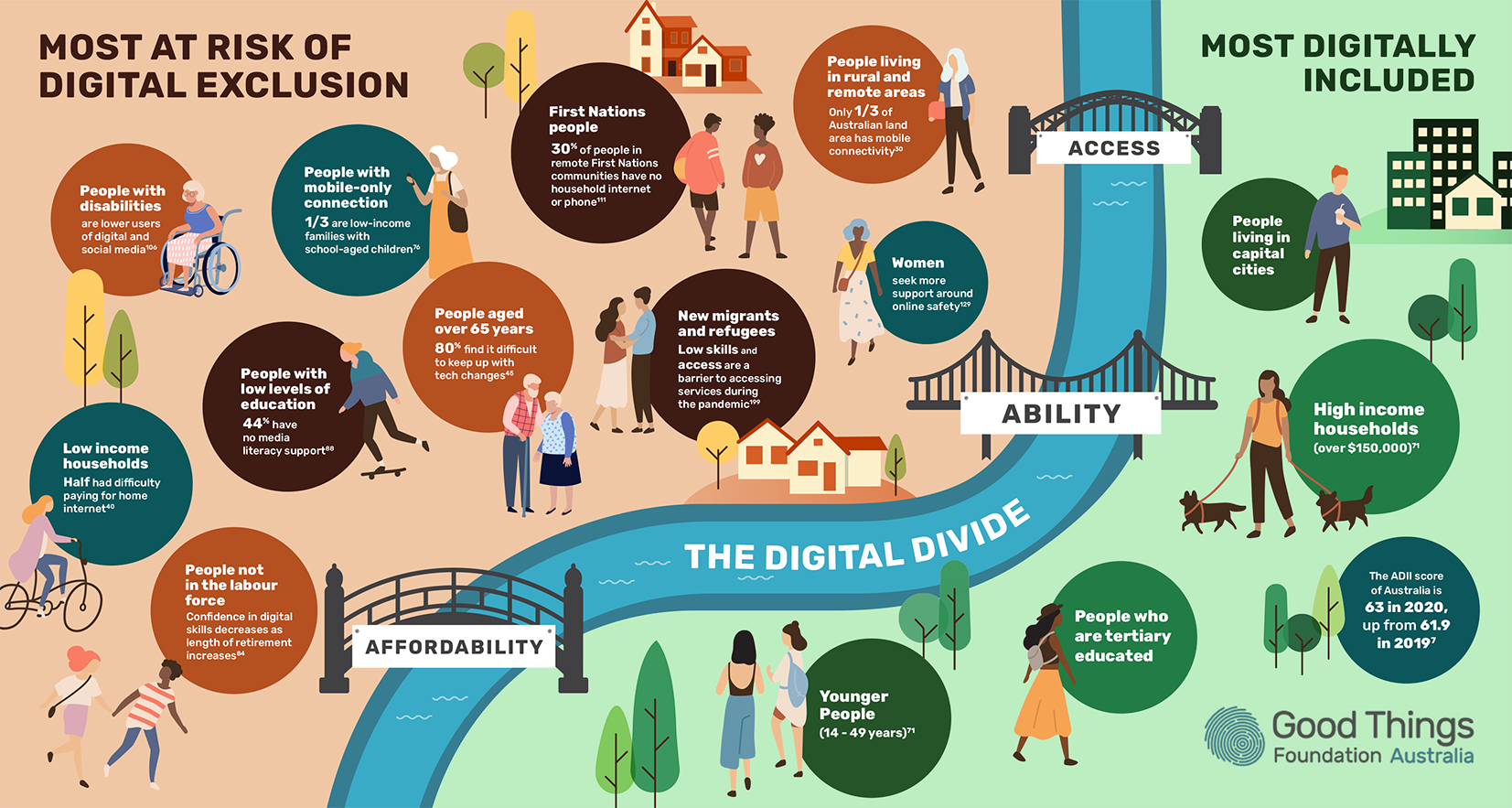Library Fiscal Health: Impact of the Digital Divide and Technological Maintenance
Libraries face a dual challenge in this modern age that significantly impacts their financial health—the digital divide and the ongoing need for technological maintenance. Let’s explore how these challenges collide and pose financial hurdles for libraries, particularly in the context of serving their communities.
A Persistent Challenge
The digital divide refers to the gap between those who have access to modern information technology and those who do not, often due to socioeconomic factors. For libraries, addressing this gap is an essential mission. However, the financial burden of providing equitable access to technology and bridging the digital divide can strain library budgets. Especially libraries which are also impoverished by lack of funding due to diminished community property taxes.
Source: ALA – Digital Inclusion Survey
Investing in Technology
Libraries play a crucial role in providing public access to computers and the internet, especially for those who may not have these resources at home. However, the financial commitment required to maintain and update computer systems, software, and internet infrastructure is often substantial. Libraries must allocate resources to ensure that their technology is not only accessible but also up-to-date and secure.
Source: Pew Research Center – Libraries 2020
Impacts on Budget Appropriations
Budget constraints can limit a library’s ability to invest in new technology or upgrade existing systems. As libraries strive to provide innovative services, allocate funds for digital resources, and address the technology needs of their communities, the demands on limited budgets become a considerable financial challenge.
Source: Urban Libraries Council – The Tech Effect: Technology, Budgets, and Serving the Public
Ensuring Access for Vulnerable Communities
The digital divide disproportionately affects vulnerable and marginalized communities. Libraries serving these populations face heightened financial pressure to execute digital inclusion programs. This includes providing training, offering free Wi-Fi access, and ensuring that devices are available to checkout for those who cannot afford them. Though these services are often expected, they are not always available due to the fiscal struggles of the library. It’s in the library’s best interest to seek alternative methods of funding whenever possible. Such as grants, fundraisers, and utilizing a small army of volunteers to help with programs.
Source: National Digital Inclusion Alliance – Digital Inclusion Principles
Rural Libraries and Connectivi ty Issues
ty Issues
Rural libraries face unique challenges related to internet connectivity. The costs associated with establishing and maintaining reliable broadband connections can strain the financial resources of these libraries. Bridging
the digital divide in rural areas requires substantial investment in infrastructure.
Source: ALA – Rural Libraries and Broadband
Training and Staff Development
Keeping library staff updated on the latest technologies is vital for providing effective services. However, investing in staff training and development programs incurs additional costs. Libraries need to allocate funds for ongoing training to ensure that staff can navigate and troubleshoot technological issues for patrons.
Source: Library Journal – Training for Library Staff
The digital divide and the ongoing need for technological maintenance present complex challenges for libraries striving to serve their communities in the digital age. Financial constraints, particularly in smaller libraries, require strategic planning and resource allocation. While the challenges are substantial, libraries continue to play a vital role in bridging the digital gap, fostering inclusivity, and adapting to the ever-changing technological landscape.


 ty Issues
ty Issues